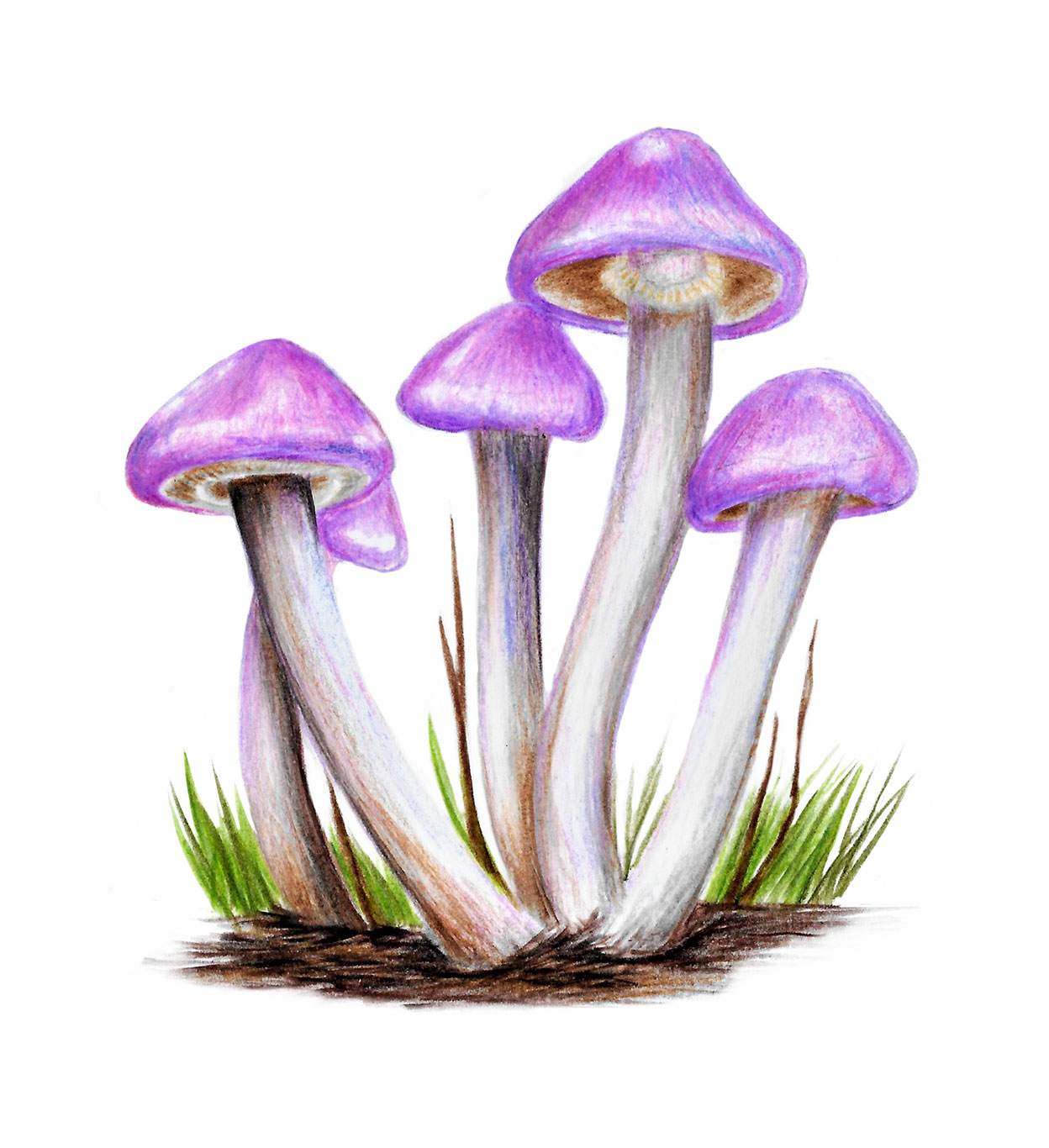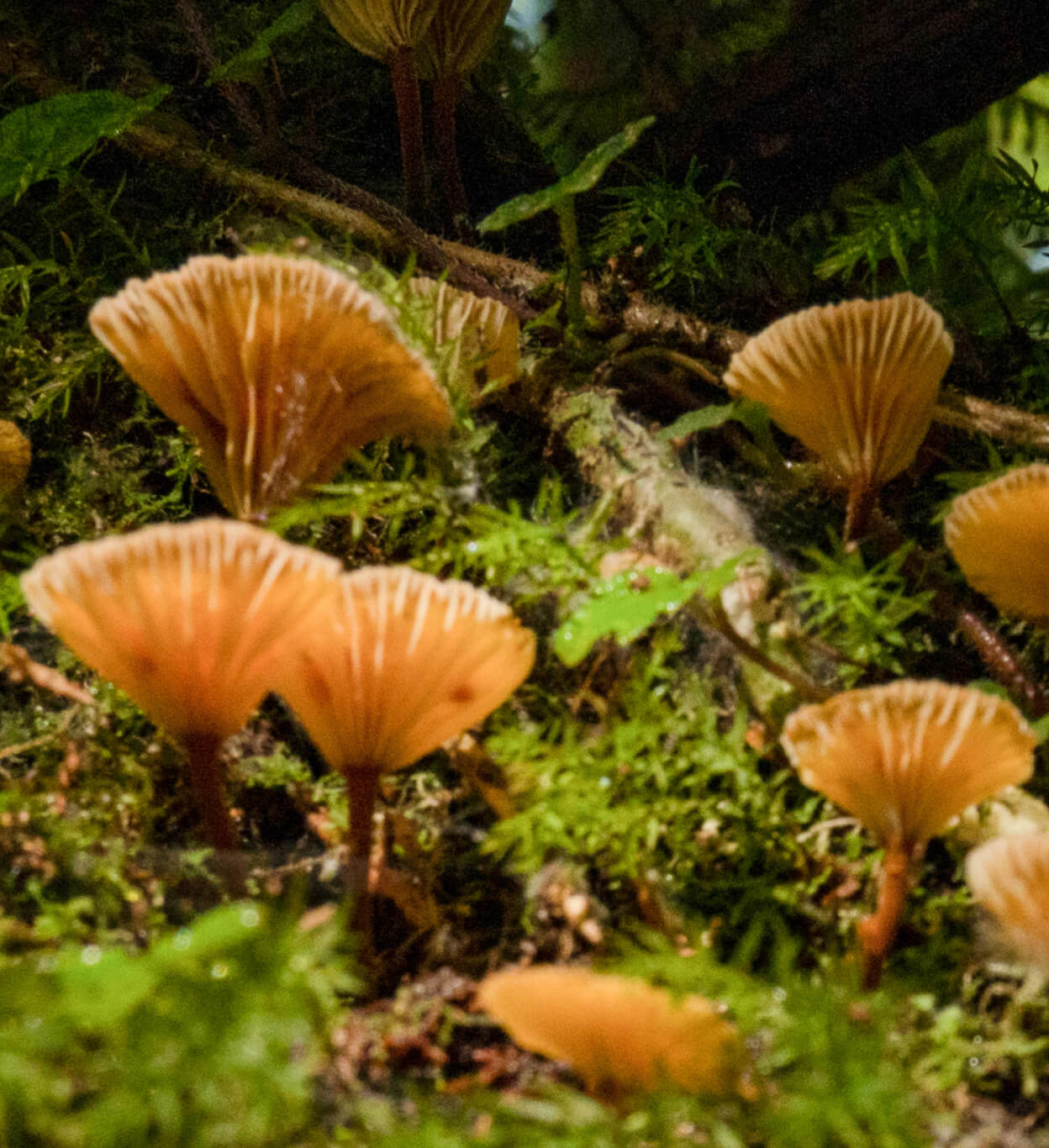Funga
To date, there are a total of 145 species of macrofungi identified in the Meullín-Puye Nature Sanctuary. Macrofungi species produce large macrostructures that are visible to the human eye. The species identified can be classified as: 33 belonging to the phylum Ascomycota (22.8%) and 112 belonging to the phylum Basidiomycota (77.2%).
The greatest diversity of these groups can be found associated to the forests of Magellan’s beech (Nothofagus betuloides), where 102 species of macrofungi have been observed. Some 19% of the species found are rhizobia, which are species that are associated with tree roots, with which they form structures known as mycorrhizae.
Formed by the roots of plants and the mycelium of a fungus, mycorrhizae are organs that function as an absorption system extending throughout the soil. They provide the plant with water and nutrients (nitrogen and phosphorus), while also protecting plant roots against diseases. This connection shows the close link between the various inhabitants of the sanctuary.
"A total 145 species of macrofungi have been identified in the Meullín-Puye Nature Sanctuary"
To date, there are a total of 145 species of macrofungi identified in the Meullín-Puye Nature Sanctuary. Macrofungi species produce large macrostructures that are visible to the human eye. The species identified can be classified as: 33 belonging to the phylum Ascomycota (22.8%) and 112 belonging to the phylum Basidiomycota (77.2%).
The greatest diversity of these groups can be found associated to the forests of Magellan’s beech (Nothofagus betuloides), where 102 species of macrofungi have been observed. Some 19% of the species found are rhizobia, which are species that are associated with tree roots, with which they form structures known as mycorrhizae.
Formed by the roots of plants and the mycelium of a fungus, mycorrhizae are organs that function as an absorption system extending throughout the soil. They provide the plant with water and nutrients (nitrogen and phosphorus), while also protecting plant roots against diseases. This connection shows the close link between the various inhabitants of the sanctuary.


